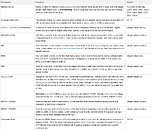Friday, May 26th 2017

AMD Announces AGESA Update 1.0.0.6 - Supports up to 4000 MHz Memory Clocks
You've probably heard of AMD's AGESA updates by now - the firmware updates that are ironing out the remaining kinks in AMD's Ryzen platform, which really could have used a little more time in the oven before release. However, kinks have been disappearing, the platform has been maturing and evolving, and AMD has been working hard in improving the experience for consumers and enthusiasts alike. As a brief primer, AGESA is responsible for initializing AMD x86-64 processors during boot time, acting as something of a "nucleus" for the BIOS of your motherboard. Motherboard vendors take the core capabilities of AGESA updates and build on them with their own "secret sauce" to create the BIOS that ultimately populate your motherboard of choice. The process of cooking up BIOS updates built on the new AGESA will vary from manufacturer to manufacturer, but AMD's Robert Hallock says you should be seeing BIOSes based on this version halfway through the month of June - if your vendor isn't already providing a Beta version of some kind.
This new AGESA update code, version 1.0.0.6, should be just up the alley of enthusiasts, however, in that it adds a grand total of 26 new parameters for memory configuration, improving the compatibility and reliability of DRAM, especially for memory that does not follow the industry-standard JEDEC specifications (e.g. faster than 2667, manual overclocking, or XMP2 profiles). Below you'll find the 26 parameters that were introduced.As an added bonus for users interested in virtualization, this new AGESA update also brings something their way, through support for PCI Express Access Control Services (ACS).This capability is especially useful for users that want 3D-accelerated graphics inside a virtual machine. With ACS support, it is possible to split a 2-GPU system such that a host Linux OS and a Windows VM both have a dedicated graphics cards. The virtual machine can access all the capabilities of the dedicated GPU, and run games inside the virtual machine at near-native performance.
Source:
Community @ AMD
This new AGESA update code, version 1.0.0.6, should be just up the alley of enthusiasts, however, in that it adds a grand total of 26 new parameters for memory configuration, improving the compatibility and reliability of DRAM, especially for memory that does not follow the industry-standard JEDEC specifications (e.g. faster than 2667, manual overclocking, or XMP2 profiles). Below you'll find the 26 parameters that were introduced.As an added bonus for users interested in virtualization, this new AGESA update also brings something their way, through support for PCI Express Access Control Services (ACS).This capability is especially useful for users that want 3D-accelerated graphics inside a virtual machine. With ACS support, it is possible to split a 2-GPU system such that a host Linux OS and a Windows VM both have a dedicated graphics cards. The virtual machine can access all the capabilities of the dedicated GPU, and run games inside the virtual machine at near-native performance.


48 Comments on AMD Announces AGESA Update 1.0.0.6 - Supports up to 4000 MHz Memory Clocks
Unfortunately, people don't know they can loosen timings to achieve the high mem speeds and think they need ultra-expensive ram. I'm still waiting for a lawsuit on the mem manufacturers *insert skeleton pic*
I have a duel rank Gskill F4-3200C14D-32GTZ
you could have just bought a intel setup for less >_>
b-die is 180 dollars for 16gb so there goes your price/performance advantage
So....
And will definitely try it at some point:)
I built two Ryzens and setting memory was a peice of piss , running it at high speeds is the issue and a fix is incoming but some like their drama.
Perhaps we should neg on all amd do, that way intel wins and we can use the same shit for another 5 years just called something faster.
2. Your price/performance advantage would still remain against a 6900K with the 4000 MHz RAMs, but with 3200 MHz RAMs you dont even lose it with an 1500X/1600 against a 7700K.